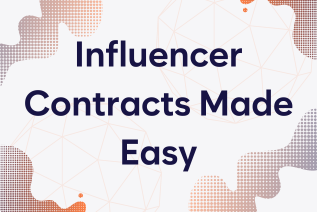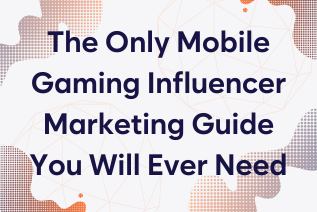Our world is rapidly evolving, with new technologies emerging every day. These technologies impact how we live, work, and interact with the world. However, as with many other new things, they can often be misunderstood and looked upon skeptically.
One of the most common challenges in introducing new topics to the public is the complexity of the subject matter. While exciting and transformative fields for the one involved, emerging sectors can be overwhelming for those unfamiliar with the jargon and concepts.
Due to the high entrance bar, conducting effective scientific education with one’s target audience is vital.
By leveraging the reach and credibility of influencers, brands, and organizations can educate the public about new technologies in a way that is engaging, accessible, and informative.
Influencer marketing has become an increasingly popular marketing strategy in recent years and for good reason. It allows brands to reach a large and engaged audience through trusted individuals who have established credibility in their field.
Influencers in the field of science and education are experts in explaining concepts in a way that is relatable and easy to understand while highlighting the benefits these technologies can bring to society.
Influencer marketing effectively breaks down these topics into more digestible pieces.
Additionally, influencers can showcase how these technologies are used in different industries and applications, helping to demonstrate their real-world impact.
In this article, we will explore the potential of influencer marketing as a tool for educating the public on complex topics.
We will examine the benefits of influencer marketing for public education and analyze one of the most important companies at the forefront of innovation that has used influencer marketing to educate and entice its audience.
Finally, we will discuss best practices for influencer marketing for scientific education and provide insights on creating effective campaigns that resonate with audiences.

What is influencer marketing?
Influencer marketing involves collaborating with influential individuals in a particular industry or niche to promote a product or service.
Influencers can be anyone from social media personalities, bloggers, experts, or celebrities, who have established credibility and a dedicated following on social media platforms.
The goal of influencer marketing is to leverage the reach and influence of these individuals to promote a brand or product to their audience.
The way influencer marketing works is simple.
Brands identify influential individuals who have a following that matches their target audience.
They then approach these influencers with an offer to collaborate, including anything from product reviews to sponsored posts or collaborations.
One of the benefits of influencer marketing is its ability to reach a highly engaged audience.
Influencers have built their following based on their interests and expertise, and their followers are often highly engaged with their content.
As a result, influencer marketing campaigns can effectively reach a targeted audience and generate qualified engagement with a brand or product.
Another benefit of influencer marketing is its ability to establish credibility and trust with the audience.
Influencers are often seen as experts and trusted by their followers.
When an influencer promotes a product or service, followers are more likely to trust their recommendation and consider purchasing it themselves.
Why use influencer marketing for scientific education
Influencer marketing for public education can provide several benefits, including increased reach, credibility, engagement, and targeted messaging.
Influencers have built their audience by consistently creating engaging content that resonates with their followers.
Scientific education campaigns can leverage this established audience to sensitize a certain group on an emerging topic.
While scientific publications may provide more in-depth resources, they are followed only by an already expert audience.
At the same time, influencers offer access to a more mixed audience of experts, enthusiasts, and people curious about the topic.
Influencers have established credibility with their audience and are well-versed in presenting topics to the audience in an easy and manageable way, making them effective messengers for public education campaigns.
Followers trust the recommendations and opinions of their favorite influencers, which can lend credibility to public education campaigns.
In addition to credibility, influencers can also drive engagement with public education campaigns.
By using social media platforms to share information and generate discussions around complex topics, influencers can create a space for their followers to engage with the content and learn more about the issues.
This engagement can create interest and awareness and potentially spark further conversation and learning.

General Electric’s (GE) “Unimpossible Missions” campaign
General Electrics partnered with Adam Savage to present a series of experiments that challenge action commonly thought to be impossible and proves how with science they can be handled.
GE has been at the forefront of storytelling and scientific communication for over 130 years.
They can be considered pioneers of influencer marketing with their GE Radio Theater.
At the time, only famed actor, Ronald Reagan presented plays, short stories, and interviewed guests alongside delivering updates on the latest GE research and products.
In 2015, GE updated the script with the “Unimpossible Missions” campaign to highlight its technology and innovation initiatives.
The campaign featured a series of videos in which Adam Savage from Mythbusters attempted seemingly impossible tasks, such as extinguishing a fire using fire, making a snowball survive a bath in molten metal, or catching lightning in a bottle.
The “Unimpossible Missions” campaign generated significant buzz and engagement on social media.
While the original uploads have been deleted, reuploads are available through Savage’s channel and sit well over 200K views each.
How to use influencer marketing in scientific education
Influencer marketing can be used by scientific institutions to build familiarity and trust in emerging fields and allow the general public to be acquainted with new technologies.
Influencer marketing can be a powerful tool for promoting scientific education and introducing new technologies to the public, but it also comes with challenges and considerations.
One of the biggest challenges is finding the right influencers to work with.
Regarding scientific education, it’s essential to discover influencers who are knowledgeable and passionate about the subject matter and have a track record of producing high-quality educational content.
This can be challenging in fields that can be highly technical and complex.
Another challenge is ensuring accuracy and credibility.
Scientific education requires a high degree of accuracy and precision, and it’s essential to work with influencers who can communicate complex concepts in a way that is both accurate and accessible.
To be sure that your selection of influencers is up to the task requires careful vetting of influencers and a commitment to fact-checking and verifying information before sharing them with the public.

The only influencer marketing platform that gives the full picture.
Balancing education with promotion is another consideration when using influencer marketing for scientific education.
While promoting new technologies and innovations is essential, providing accurate and unbiased information about these technologies is equally important.
Achieving the correct composition requires a careful balance between promotional messaging and educational content and a commitment to transparency and honesty.
Finally, measuring success is a critical consideration for any influencer marketing campaign.
Regarding scientific education, measuring success can take various ways, including engagement metrics such as likes, comments, and shares, and qualitative measures such as changes in attitudes and perceptions.
It’s essential to set clear goals and KPIs for each campaign and to track and analyze data to determine what is working and what can be improved.
By finding the right influencers, ensuring accuracy and credibility, balancing education with promotion, addressing ethical considerations, and measuring success, brands, and organizations can leverage influencer marketing to help educate and inspire the public about the latest advancements in scientific fields.

Conclusion
Influencer marketing has the potential to be a powerful tool for promoting public education on complex topics.
By working with knowledgeable and passionate influencers, brands and organizations can help educate and inspire the public about the latest advancements in science and technology.
The benefits of influencer marketing for scientific education include increased reach, credibility, engagement, and targeted messaging.
However, some challenges must be addressed, including finding the right influencers, ensuring accuracy and credibility, balancing education with promotion, addressing ethical considerations, and measuring success.
Influencer marketing will likely play a significant role in science education and public outreach efforts.
As technology advances and new scientific discoveries are made, there will be a growing need for effective communication and scientific education strategies to help the public understand the impact of these developments.
Influencer marketing offers a unique opportunity to connect with audiences in a meaningful and engaging way and to foster a deeper appreciation for the role of science and technology in our lives. And positions itself as a valuable tool for promoting scientific education and driving the acceptance of new technologies.
By approaching this tool with care, thoughtfulness, and a commitment to excellence, brands, and organizations can help ensure that science and technology continue to be accessible and engaging for everyone.




![The Ultimate Guide To Social Commerce [Platforms, Strategies, & Benefits]](https://www.creatordb.app/wp-content/uploads/The-Ultimate-Guide-To-Social-Commerce-Platforms-Strategies-Benefits.png)
